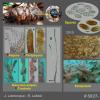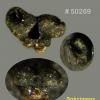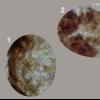
08-12-2025 21:04
Mark Stevens"Hello everyone,I'm relatively new to microscopy (

08-12-2025 18:59
 Lothar Krieglsteiner
Lothar Krieglsteiner
.. found by a seminar-participant, I do not know t

08-12-2025 17:37
 Lothar Krieglsteiner
Lothar Krieglsteiner
20.6.25, on branch of Abies infected and thickened

07-12-2025 16:07
Arnold BüschlenHallo, ich habe in einer Moos-Aufsammlung (epiphy

16-03-2014 22:00
Hello,I found this species a few months ago but ha

08-12-2025 13:39
Thomas Læssøehttps://svampe.databasen.org/observations/10572899

05-12-2025 17:33
 Bruno Coué
Bruno Coué
Bonjour, je serais heureux de recueillir votre avi
50276 - Asco inconnu
Roland Labbé,
03-05-2010 20:31
Voici un asco en forme de petites cupules noires.
Il est inconnu de nous.
Il a été récolté sur un cône d'épinette.
Est-ce possible que ce soit Phragmotrichum chailletii ?
Rustroemia bulgaroides a aussi été récolté sur ces cônes.
Nous nous demandions si les petites plaques noires ne pouvaient être le Rustroemia qui débutaient.
Merci. amitiés !
Roland
Détails :
Date de récolte : 28 / 04 / 2010
Substrat: cône de conifère
Sporée non disponible
Spores ellipsoïdes, lisses, à 1 septum médian, bourgeonnant souvent à 1 ou 2 extrémités, avec fines guttules ou granulations aux 2 extrémités, hyalines en NaCl iso., 9-12 x 4-5,5 µm, 10,4 x 4,4 µm en moyenne( 20 spores), Q = 2,36
Asques à 8 spores unisériées, avec crochet à la base et appareil apical inamyloïde, 85-105 x 8-9 µm
Paraphyses étroitement cylindriques, ramifiées, septées, à contenu huileux-granuleux 100%, 1-1,5 µm de diam.
Poils marginaux peu abondants, semblables aux paraphyses, 2 µm de de diam.
Excipulum difficile à préciser, semblant gélatinisé
Hans-Otto Baral,
08-05-2010 23:41

Re:50276 - Asco inconnu
Hi Roland
this cannot be Ciboria/Piceomphale bulgarioides because of the presence of croziers and the inamyloid asci. How large are the apos, are they sessile, erumpent? The excipulum does not seem to be a globulosa.
I am unaware of Phragmothecium chailletii, you mean Phragmotrichum chailletii. THis seems to be an imperfect fungus.
Zotto
this cannot be Ciboria/Piceomphale bulgarioides because of the presence of croziers and the inamyloid asci. How large are the apos, are they sessile, erumpent? The excipulum does not seem to be a globulosa.
I am unaware of Phragmothecium chailletii, you mean Phragmotrichum chailletii. THis seems to be an imperfect fungus.
Zotto
Roland Labbé,
09-05-2010 18:39
Re:50276 - Asco inconnu
Hi Zotto !
The plate will be changed and texteu ajusted.
We work now on a black disco on Picea cone.
It sems to be the same than the one on the plate.
We think the little black cupules on cones were P. chailletii, but are insted a young disco.
The inamyloid asci and presence of croziers do not fit at all for P. bulbarioides.
Which are other black disco growing on Picea cones ?
Thank's very much Hans !
Roland
The plate will be changed and texteu ajusted.
We work now on a black disco on Picea cone.
It sems to be the same than the one on the plate.
We think the little black cupules on cones were P. chailletii, but are insted a young disco.
The inamyloid asci and presence of croziers do not fit at all for P. bulbarioides.
Which are other black disco growing on Picea cones ?
Thank's very much Hans !
Roland
Hans-Otto Baral,
09-05-2010 21:42

Re:50276 - Asco inconnu
My database does not show any other disco on Picea cones with such a spore size.
Zotto
Zotto
Roland Labbé,
13-05-2010 23:02
Re:50276 - Asco inconnu
Hans, veillez vérifier, pour comparaison, la planche No 50274 que je viens de
déposer à l'instant sur le forum.
Comment décririez-vous le textura de l'exipulum sur cette planche-ci ?
Merci,
Roland
déposer à l'instant sur le forum.
Comment décririez-vous le textura de l'exipulum sur cette planche-ci ?
Merci,
Roland
Hans-Otto Baral,
13-05-2010 23:27

Re:50276 - Asco inconnu
you mean the textura globulosa?
Roland Labbé,
13-05-2010 23:37
Re:50276 - Asco inconnu
Yes, but it's not a textura globulosa.
You have said that to me.
I change to textura is difficult to definite, see the text, please.
Merci, Roland
You have said that to me.
I change to textura is difficult to definite, see the text, please.
Merci, Roland
Hans-Otto Baral,
14-05-2010 00:01

Re:50276 - Asco inconnu
I have actually problems to understand which plate you mean. Do you mean the recent one of Piceomphale? I apparently do not find the right place.
Roland Labbé,
14-05-2010 01:40
Re:50276 - Asco inconnu
Hans, You have made a good identification of Piceomphale bulgarioides.
This plate on that page is the right for my request :
You have write me that it's not a textura globulosa.
So, what is the excipulum type ?
More, do you have and idea of what kind of disco it is ?
Thank you !
Roland
This plate on that page is the right for my request :
You have write me that it's not a textura globulosa.
So, what is the excipulum type ?
More, do you have and idea of what kind of disco it is ?
Thank you !
Roland
Hans-Otto Baral,
14-05-2010 09:21

Re:50276 - Asco inconnu
Hi Roland
In my first answer to the present page I wrote that this find with croziers does not seem to have a t. globulosa (which is typical of true bulgarioides). Your plate of the true bulgarioides shows a typical globulosa.
For the one with croziers I have no idea about the genus. I would like to see a section showing whether the apo is broadly attached to the substrate (unlike bulgarioides which has a stipe), and how the different layers of the excipula look in situ.
Zotto
In my first answer to the present page I wrote that this find with croziers does not seem to have a t. globulosa (which is typical of true bulgarioides). Your plate of the true bulgarioides shows a typical globulosa.
For the one with croziers I have no idea about the genus. I would like to see a section showing whether the apo is broadly attached to the substrate (unlike bulgarioides which has a stipe), and how the different layers of the excipula look in situ.
Zotto
Roland Labbé,
14-05-2010 19:06
Hans-Otto Baral,
14-05-2010 21:28

Re:50276 - Asco inconnu
The left two images are from the sides, so the apothecia have a very short stout stipe. (The ellipsoid cut is a bit irritating to me).
Do you think you can manage a median section?
Zotto
Do you think you can manage a median section?
Zotto
Roland Labbé,
14-05-2010 22:10
Re:50276 - Asco inconnu
Yes, excipulum photo is now on.
There are two kinds of cells.
Roland
There are two kinds of cells.
Roland
Roland Labbé,
15-05-2010 03:52
Hans-Otto Baral,
15-05-2010 21:46

Re:50276 - Asco inconnu
Its good to have this image. Cortical cells seem round and thick-walled, but form a rather thin layer. I think your species is something rare and strange, little known. Like a Durella in a wide sense.
Zotto
Zotto
Roland Labbé,
16-05-2010 03:19
Re:50276 - Asco inconnu
Thanks Hans !
I have done a key of Durella and the sole species that grows on Pinus cones is D. suecica.
But, ours specimens grows on a white Picea and have more little spores and ascus.
Roland
I have done a key of Durella and the sole species that grows on Pinus cones is D. suecica.
But, ours specimens grows on a white Picea and have more little spores and ascus.
Roland
Hans-Otto Baral,
16-05-2010 09:29

Re:50276 - Asco inconnu
Durella suecica has amyloid asci and a discrete brown textura porrecta on the outside, narrower spores etc. But species with isodiametrical cells and superficial resemblance to Durella are very little known.
what is white Picea?
Zotto
what is white Picea?
Zotto
Roland Labbé,
17-05-2010 04:34
Re:50276 - Asco inconnu
This the white spruce or Picea glauca.
Roland
Roland



